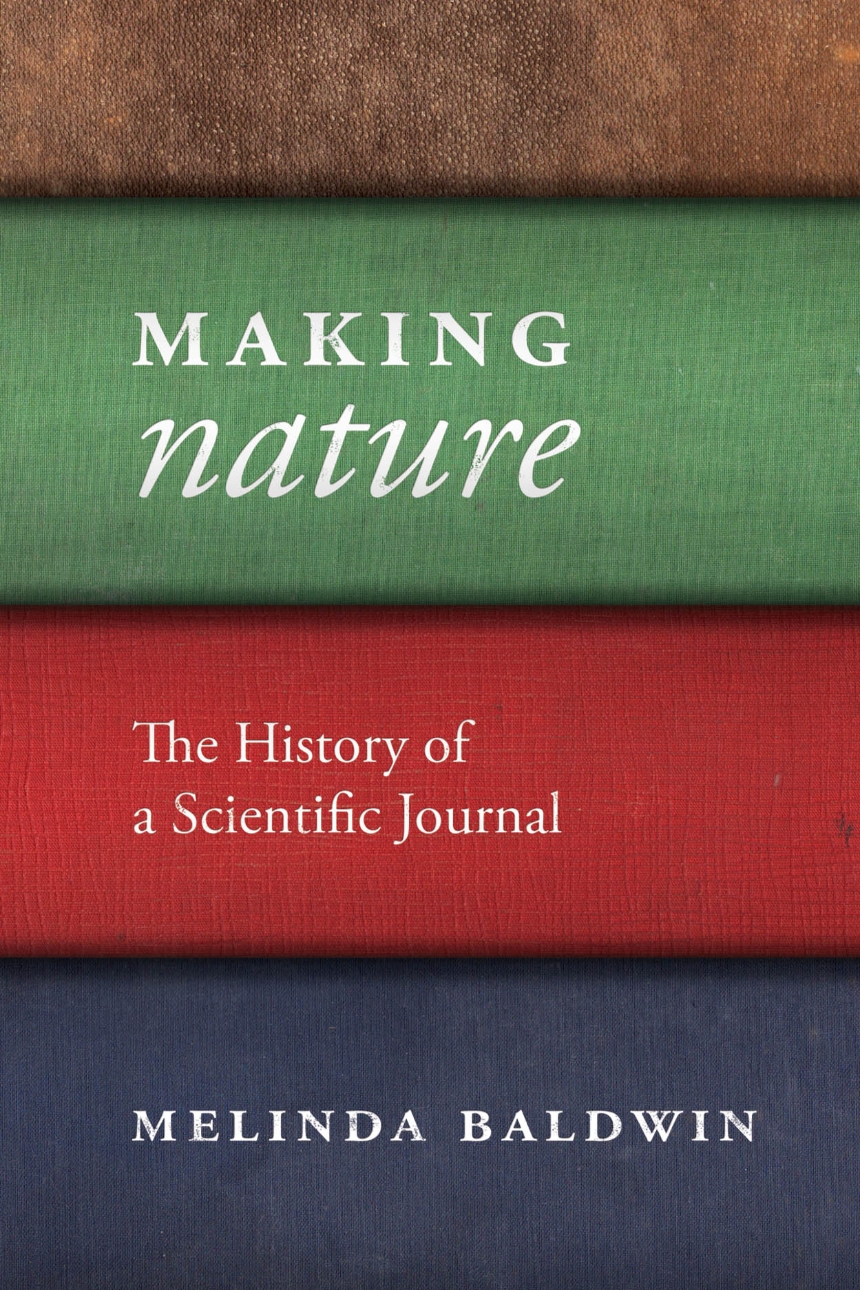Making "Nature"
The History of a Scientific Journal
Making "Nature" is the first book to chronicle the foundation and development of Nature, one of the world’s most influential scientific institutions. Now nearing its hundred and fiftieth year of publication, Nature is the international benchmark for scientific publication. Its contributors include Charles Darwin, Ernest Rutherford, and Stephen Hawking, and it has published many of the most important discoveries in the history of science, including articles on the structure of DNA, the discovery of the neutron, the first cloning of a mammal, and the human genome.
But how did Nature become such an essential institution? In Making "Nature," Melinda Baldwin charts the rich history of this extraordinary publication from its foundation in 1869 to current debates about online publishing and open access. This pioneering study not only tells Nature’s story but also sheds light on much larger questions about the history of science publishing, changes in scientific communication, and shifting notions of "scientific community." Nature, as Baldwin demonstrates, helped define what science is and what it means to be a scientist.
But how did Nature become such an essential institution? In Making "Nature," Melinda Baldwin charts the rich history of this extraordinary publication from its foundation in 1869 to current debates about online publishing and open access. This pioneering study not only tells Nature’s story but also sheds light on much larger questions about the history of science publishing, changes in scientific communication, and shifting notions of "scientific community." Nature, as Baldwin demonstrates, helped define what science is and what it means to be a scientist.
328 pages | 12 halftones, 3 tables | 6 x 9 | © 2015
Guides, Manuals, and Reference: Books on Books
Physical Sciences: History and Philosophy of Physical Sciences
Reviews
Table of Contents
Citations and Abbreviations
A Note to the Reader
Introduction
Who Is a “Scientist”?
Chapter One
Nature’s Shifting Audience: 1869–1875
Chapter Two
Nature’s Contributors and the Changing of Britain’s Scientific Guard: 1872–1895
Chapter Three
Defining the “Man of Science” in Nature
Chapter Four
Scientific Internationalism and Scientific Nationalism
Chapter Five
Nature, Interwar Politics, and Intellectual Freedom
Chapter Six
“It Almost Came Out on Its Own”: Nature under L. J. F. Brimble and A. J. V. Gale
Chapter Seven
Nature, the Cold War, and the Rise of the United States
Chapter Eight
“Disorderly Publication”: Nature and Scientific Self-Policing in the 1980s
Conclusion
Acknowledgments
Notes
Bibliography
A Note to the Reader
Introduction
Who Is a “Scientist”?
Chapter One
Nature’s Shifting Audience: 1869–1875
Chapter Two
Nature’s Contributors and the Changing of Britain’s Scientific Guard: 1872–1895
Chapter Three
Defining the “Man of Science” in Nature
Chapter Four
Scientific Internationalism and Scientific Nationalism
Chapter Five
Nature, Interwar Politics, and Intellectual Freedom
Chapter Six
“It Almost Came Out on Its Own”: Nature under L. J. F. Brimble and A. J. V. Gale
Chapter Seven
Nature, the Cold War, and the Rise of the United States
Chapter Eight
“Disorderly Publication”: Nature and Scientific Self-Policing in the 1980s
Conclusion
Acknowledgments
Notes
Bibliography
